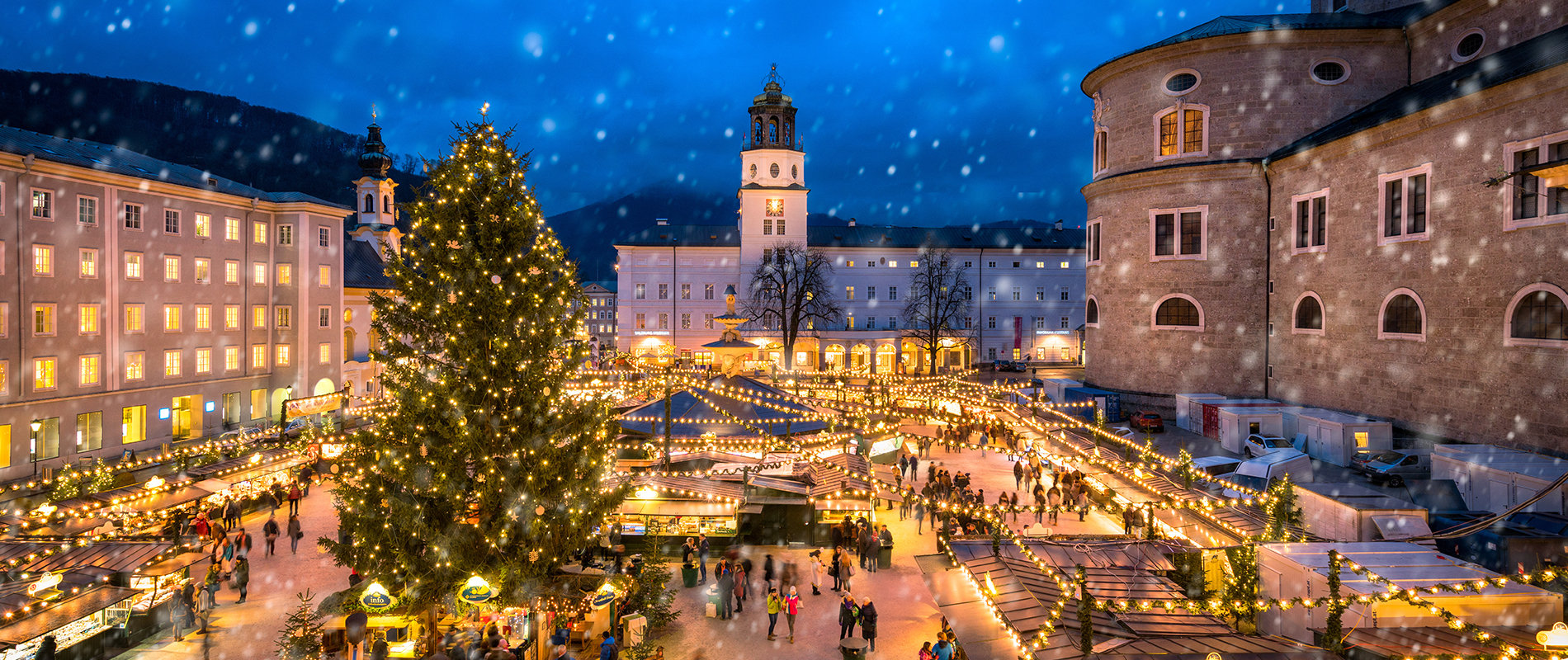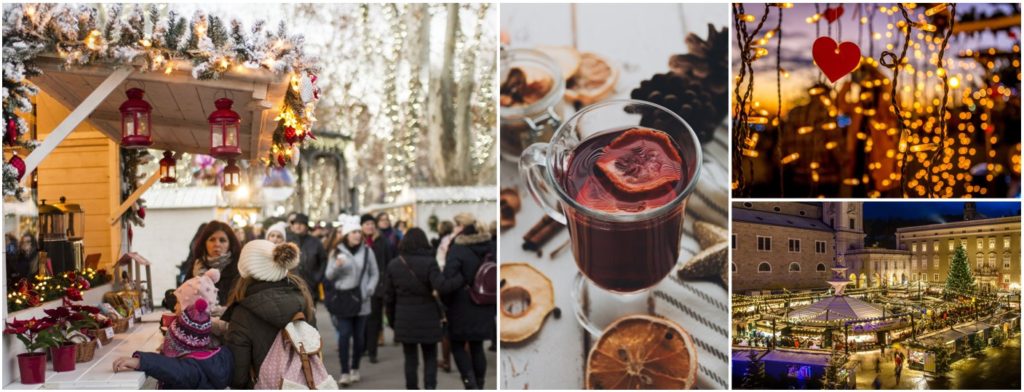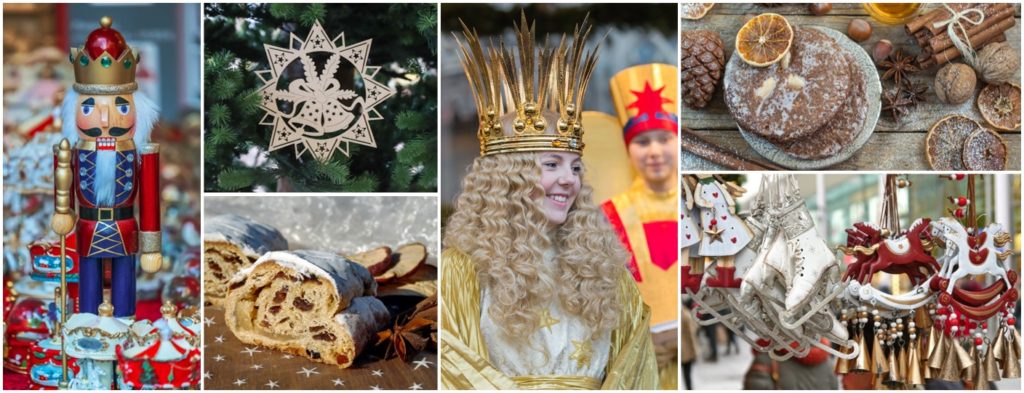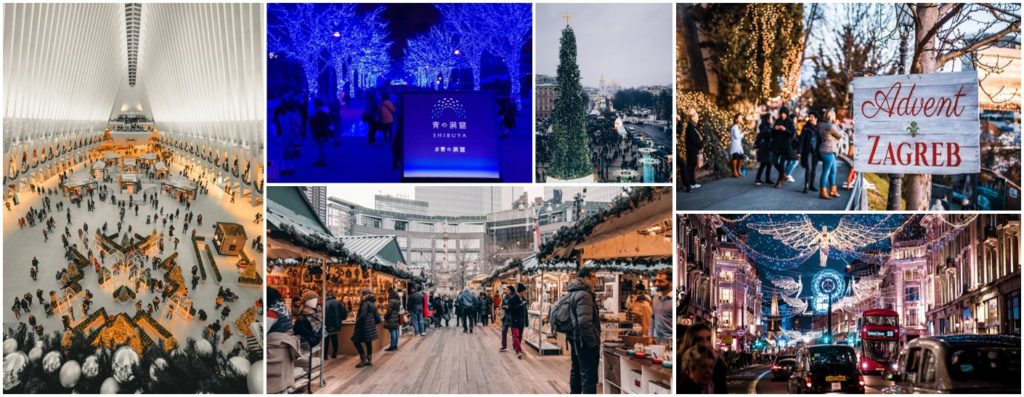

Typical German Christmas Market in Landsberg am Lech, roughly 1 hour west of Munich, Germany.

There’s nothing in the world quite like Christmas in Europe, where every year the start of Advent signals the opening of festive Christmas Markets, bringing with it a flurry of childlike excitement as cities big and small commence holiday celebrations. Combining the charm of tradition with the enchantment of the holiday season, these vibrant open-air markets immerse all who visit in festive holiday cheer, their convivial atmosphere the embodiment of joy and contentment – or as the Germans would say, Gemütlichkeit.
The story begins in German-speaking Europe during the middle ages. The precursor to the modern Christmas Market is widely considered to be Vienna’s Dezembermarkt (December Market) – also referred to as a Krippenmarkt (Manger Market) – which came about when Emperor Albrecht I granted shopkeepers the privilege of holding a market for a few days in early winter so that citizens of Vienna could stock up on supplies needed to last through the cold months of winter. First recorded in 1298, it predates the mention of other similar Wintermärkte (winter markets) which were held across what is now Germany and Austria. Some notable mentions of these winter markets are those in Munich in 1310, Bautzen in 1384, and Frankfurt in 1393. However, it was Dresden’s Striezelmarkt, first held in 1434, which is widely considered to be the first genuine Christmas Market. The word Striezelmarkt comes from Strüzel or Stroczel, a type of cake sold at the market with dried fruit and nuts, now known as Stollen or Christstollen.
The Striezelmarkt, like the other early markets, was traditionally held in the town square and began by selling only meat. Over time the markets evolved to include other everyday purchases, and eventually grew to include seasonal treats and handicrafts such as baskets, toys, woodcarvings, roasted nuts, gingerbread, and other baked goods, accompanied by singing and dancing. In the past, only local tradesmen were permitted to sell their crafts at the city’s market, which contributes to the distinctive regional character still seen in today’s markets.

In the 16th-century, Christmas Markets saw an increase in popularity thanks to the teachings of German protestant reformer, Martin Luther. Prior to this time, gifts were traditionally exchanged on the saint’s days of St. Nicholas, on December 6, or of St. Martin, on November 11. However, Luther wished to turn away from the Catholic devotion to saints, and so he suggested the birth of Christ as a more appropriate day for gift-giving. He told his children that “Holy Christ” had brought them their gifts, or rather, the Christkind, which translates directly to “the Christ child” but usually refers to an angel-like “spirit of Christmas” rather than the literal Christ Child. Over the years, this fictional “Spirit of Christmas” took on form as a sort of angel, first being depicted in Christmas plays as either male or female, and later exclusively as female. Today, many Christmas Markets’ opening ceremonies include an appearance by the Christkind, often acted out by a local girl.
Luther’s tradition quickly took hold among protestant families who also began exchanging gifts on December 24th. As this custom spread, many Christmas markets began calling themselves Christkindlmarkts, especially in the south of Germany. The churches – who had originally encouraged markets to be held nearby in order to draw more visitors to services – soon found themselves competing for attention with the bustling markets. In fact, there is a now famous tale of a priest in Nürnberg who, in 1616, complained that he was unable to hold the afternoon service on Christmas Eve because no one was in attendance – his congregation was shopping at the market. It was during this time that Christmas gift-buying took off, with the markets serving as the main location for buying seasonal treats and toys.

Today, there are more than 1,400 Christmas markets in Germany alone, and the tradition has spread not only across Europe, but across the entire world. Major holiday markets can be found in cities from London to Moscow, and New York to Tokyo, each with its own unique local flair. These modern markets serve much the same purpose as those of old – a jovial meeting place for locals and visitors to shop and celebrate the yuletide season. With such a rich and joyful history, it’s no wonder this beloved tradition has become a holiday fixture across the globe.